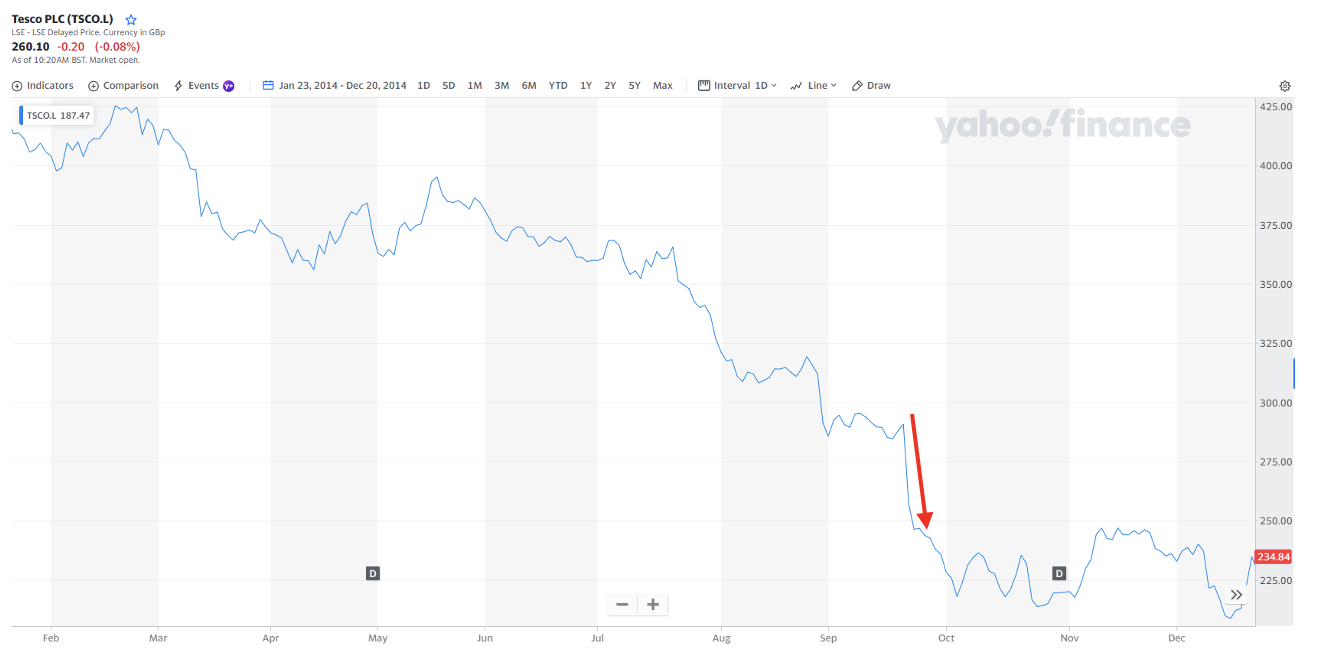Most investors are aware of the concept of efficient versus inefficient markets – arguably few know how to actually use this concept to manage the risk/reward trade-off in their portfolio.
The Efficient Market Hypothesis
To understand what we mean by market-beating or out-sized returns it is necessary to quickly explain the Efficient Market Hypothesis (EMH). First proposed by statistician Eugene Fama, seen below receiving the Nobel Prize for Economics in 2013, the EMH is today one of the most popular theories of asset price formation and portfolio management.
There are several competing versions of the theory, but essentially it can be summarised as follows:
1. Today’s financial markets are made up of many thousands of buyers and sellers. Most of these have access to very rapid information flows and are armed with models and analytical decision tools of varying degrees of sophistication.
2. This means that when new developments in the real world happen, that information is received, processed, and acted upon almost instantly by market participants.
3. The sum result of all this ‘rational’ and ‘correct’ behaviour by buyers and sellers is that market prices almost always reflect an accurate and realistic appraisal of the value of a company.
4. The extremely important conclusion of this is that it is therefore highly unlikely that anyone will be able to consistently generate investment returns above and beyond the market average.
The EMH in action
A brief example can make clear exactly how the EMH claims markets work, and why this means out-sized returns are improbable over any length of time.
In September 2014, Tesco admitted its accounting department had either intentionally or unintentionally overstated profits by around £250 million. As can be seen on the chart below showing the movement of Tesco’s share price from January through to December 2014, the announcement of this overstatement of profits in late September precipitated an immediate and dramatic sell-off in Tesco’s stock, causing the price to plunge.


This wiped about £2 billion off Tesco’s market cap in a few hours, as investors quickly factored in lower profits and adjusted their view of how desirable Tesco’s stock was as an asset to hold.
This sudden and large-scale movement in the price of a FTSE 100 blue-chip stock was purely caused by the release of information to the public which the market quickly and efficiently responded to, in this case by selling until the stock had sunk to a level appropriate with the new information about the real profitability of Tesco.
This is what the EMH means by saying that market prices reflect all currently available information.
A hypothetical investor who knew in advance that Tesco’s profits were inflated could have made an outsized profit – ‘alpha’ in finance jargon – by selling just prior to the announcement and then buying back into the stock at the cheaper price after the news broke.
However, such activities would be considered as insider-trading, and are not only illegal but are impractical to do.
The key point is that to consistently make a profit from trading in the equity markets, you would need to have quicker or better information than your rivals, and this is impractical, impossible, and sometimes illegal.
Why are real estate markets often inefficient?
So, the EMH argues that in the public markets where an army of analysts from all around the world watch and scrutinise every move, every press release, every executive speech, and every financial disclosure made, no one can consistently buy and sell at the right times to make market-beating returns.
The conclusion is therefore that where the public markets are concerned, you are best off putting your money into a low-fee, index tracking fund which simply buys all the securities in a particular index and therefore earns you the average return in that market each year.
However, for several reasons this approach does not currently apply to real estate investment. Accordingly, there is much more potential here for individual investors to make returns that beat the market average and compare very favourably with returns available in the public markets.
Mispriced assets
Understanding why real estate in general, and the mid-market segment in particular, are classic examples of inefficient markets will be the theme of a series of articles over the coming weeks. Today we shine a light on the mispricing of real estate assets.
As everyone who has ever bought or sold a property can attest, despite the fact that these are for most of us by far the largest capital outlays we will ever make, the way prices are arrived at in these enormously important transactions is more than a little arbitrary.
Prices for real estate assets, be they an individual residential home or an entire commercial development, are still ultimately a result of negotiations between individuals or groups. This means that subjective factors play a large role, and the price agreed on one day could vary quite dramatically from what would have been agreed the next day or the next week.
The situation is further complicated by the fact that real estate investments are by their nature long-term, often illiquid assets that are amortised over longer time periods than traditional assets like stocks or bonds. As a result, the pricing of such assets relies heavily on unverifiable assumptions about future cash flows which are difficult to estimate and value correctly.
Mispriced assets can mean out-sized returns
The outcome of widespread asset mispricing is that profitable real estate investment opportunities can often turn out to be significantly more profitable than comparable opportunities in the public markets.
With the right approach and the right market knowledge, it is possible to identify situations where returns in excess of those available elsewhere can be made without a significant increase in risk.
Shojin has been operating successfully in this space since 2009, and we are excited to keep bringing more profitable mid-market development opportunities to our investor community.




















